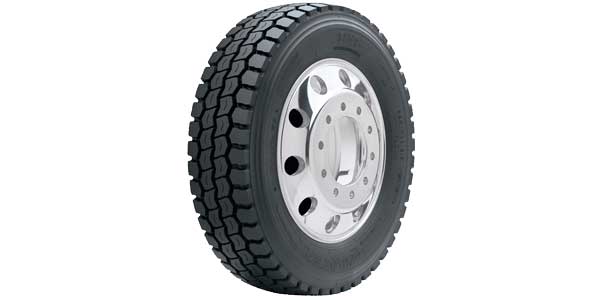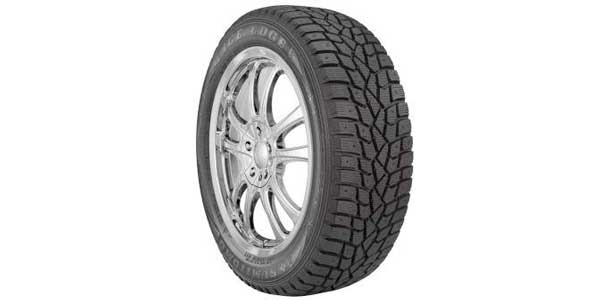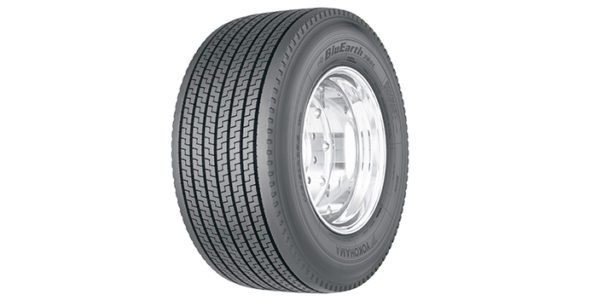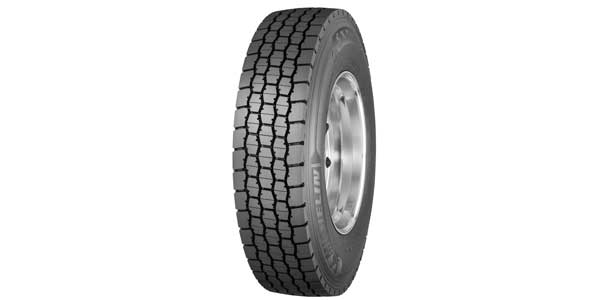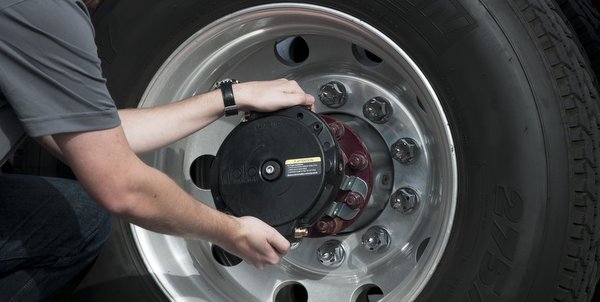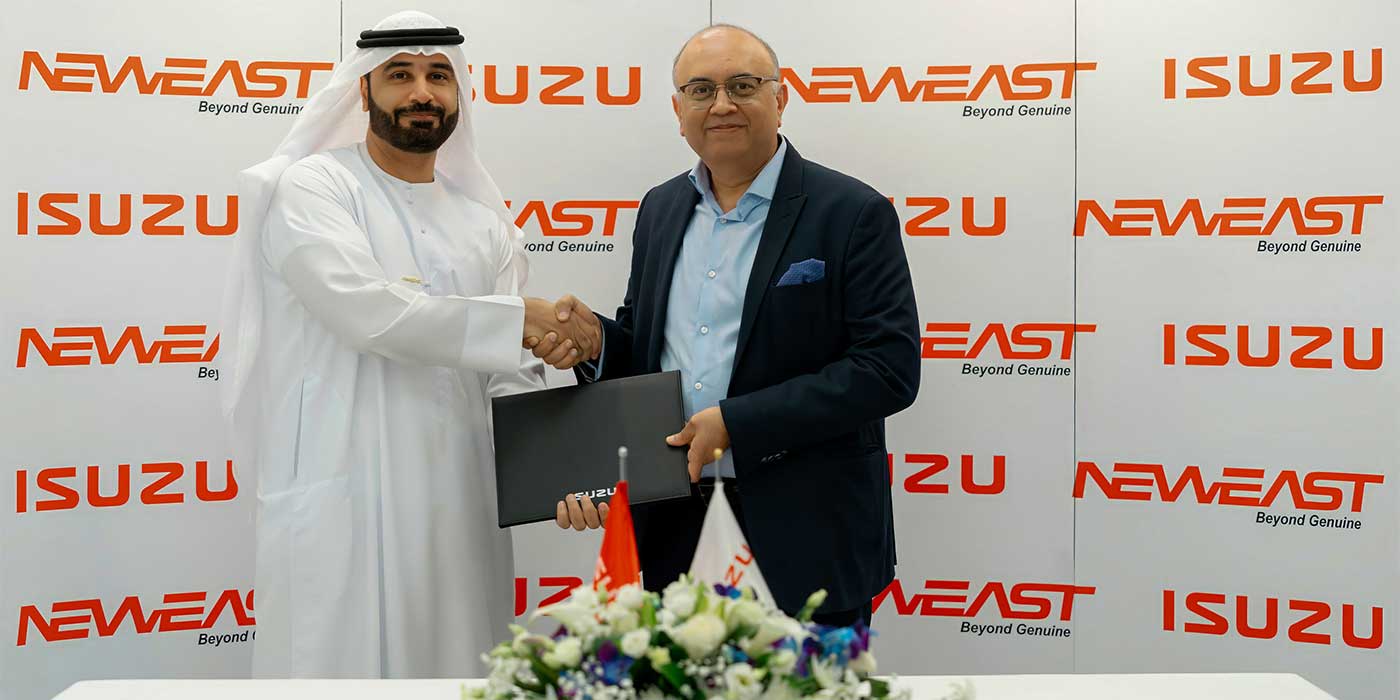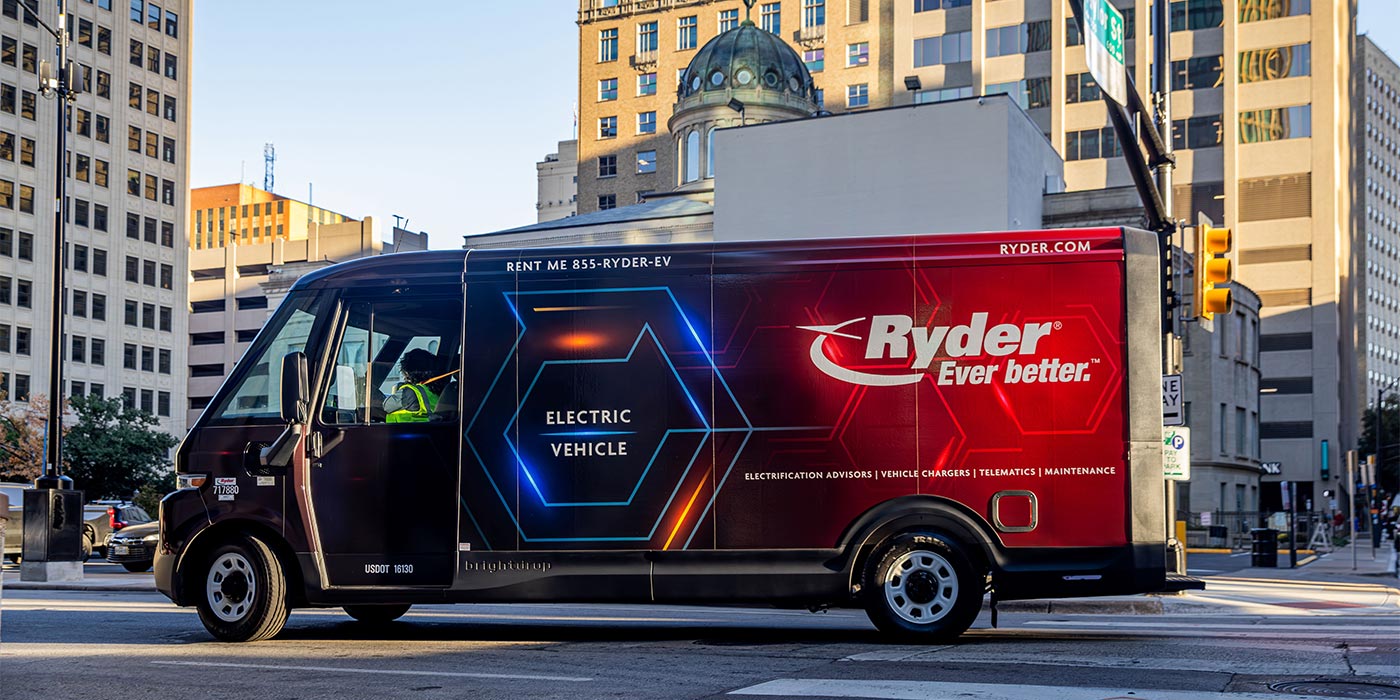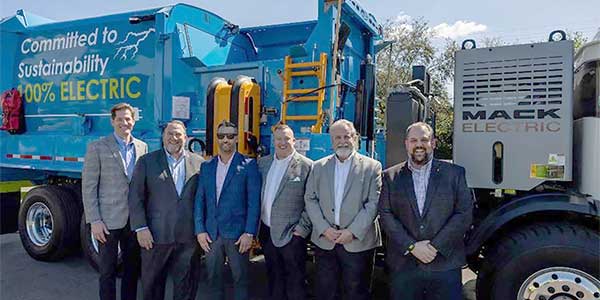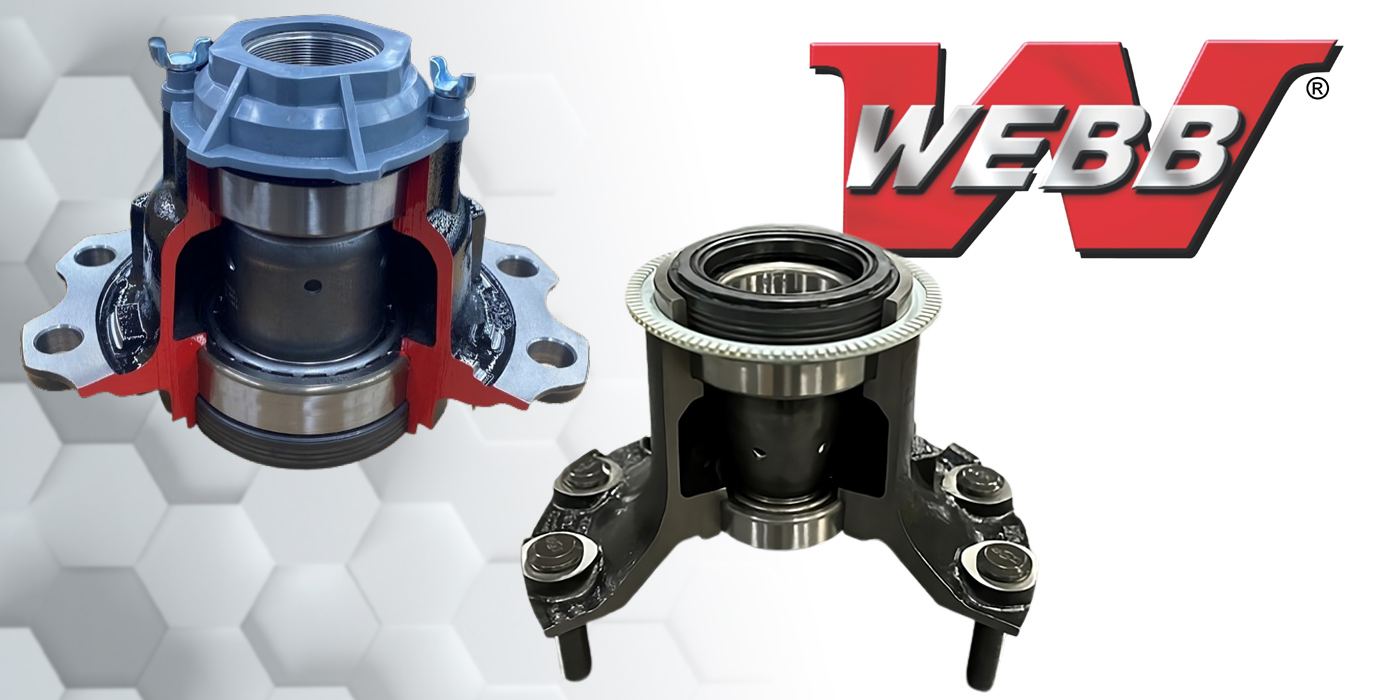If you came here looking for a quick and easy explanation of what kind of tires to spec for your medium-duty trucks, well, I’m afraid it’s not that simple. The problem with saying “medium-duty tires” is that it’s not an easily definable category—the medium-duty market comprises a vast array of applications. There’s food and beverage, refrigerated, parcel, pickup and delivery, armored, rescue, utility, construction, wreckers, shuttles and landscape—and those are just some of the examples. As you might imagine, each of these applications will have different tire needs and different aspects they want to prioritize. So what’s a medium-duty fleet to do when faced with this wide array of choices and needs?
“The two most important variables to consider are the specific application of the vehicle and weight considerations,” says Anita McGinnis, commercial regional director with Hankook Tire America Corp. “A vehicle that is going to be making deliveries in a city or a regional environment will have different needs than a dump truck that will be used off-road and cover rugged terrain. Other considerations include GVWR requirement, ride-height requirement, durability, traction and climate considerations.”
“The truck weight, payload, occupants, equipment and whether truck is operating in urban, suburban or rural environments will govern what tires are appropriate for the application,” says Donna Murphy, business segment manager for Michelin Americas Truck Tires. “With the multitude of uses served by medium-duty trucks, it is hard to generalize, but there are three main performance attributes fleets look for: robustness, long tread life and traction.”
By robustness, Murphy adds, she means that the tire should be made with strong casing to resist casing puncture and traction for utility and construction applications, and strong, damage-resistant side walls to resist curbing damage and wet traction in stop-and-start environments like regional and urban delivery applications.
“If a customer selects an incorrect tire for an application, the intended design and purpose of the tire are negated. For example, if an urban pickup-and-delivery tire is selected for a line-haul operation, the tire will not perform well, as it is not designed for that particular environment,” says Ron Greenleaf, region sales manager with GCR Tires and Service, a business of Bridgestone Americas dedicated to providing commercial tires and service to fleet customers. “Conversely, if a line-haul tire is selected for an urban environment, it will not hold up to the stop-and-go, high-turning, scrubbing and road hazards that are typical in that environment. In both cases, the customer will not be happy with the performance of their tires.
“We also want to understand what performance attributes are most important to the customer,” he adds. “Traction, fuel efficiency, long wear life and ride comfort all are important considerations.”
Greenleaf recommends these tips when making a tire purchase:
- Work with a trusted tire advisor to select the appropriate tire design for your business objectives and preferences;
- Ensure that the tires are the correct size and load range to meet the Gross Axle Weight Rating;
- Choose a tire with the appropriate speed capability for the service conditions.
“Load carrying capacity and traction needs are key to deciding the correct tire for each application,” says Raul Garcia of Falken Tires commercial product planning. “Each tire is built for specific performance level in terms of route and terrain severity.” Garcia goes on to highlight tread design type, application, on/off capability and casing warranty as particularly important considerations for fleets.
Aaron Murphy, vice president of commercial tire sales for TBC Corp., singles out important components for tires used in vocational or urban applications. “These high-scrub, stop-and-start tire-twisting types of environments require tires that perform well in a multitude of maneuvers,” he says. “Trucks must be fitted with tires that have durability on the tread and sidewall area as well as the internal casing architecture. In addition, recent vehicle changes require tires to have a higher speed rating to meet the latest vehicle specifications. Manufacturers create specific tire models that address these types of environments and requirements.”
Since fuel is a fleet’s largest expenditure, fuel efficiency is a key consideration in choosing any equipment, and tires are no exception.
“Fuel costs are a leading cost for medium-duty fleets and fuel efficiency, which factors into meeting government regulations like Greenhouse Gas emissions. This means fleets should also consider lower rolling resistance tires that provide fuel economy without sacrificing the key performance attributes needed,” Michelin’s Murphy recommends.
And don’t forget about tread.
“The tread area provides several opportunities to increase the efficiency and effectiveness of a tire,” Murphy points out. “The tread rubber is designed with compounds that are capable of withstanding the higher degree of scrubbing that comes with frequent starts, stops and turns for longer tread life—and still provide greater fuel savings.”
“Hankook’s medium truck line has many different tread types designed around a vehicle’s operating weight, specific tire position or axle,” says Hankook’s McGinnis. “For example, some tires are designed for the steering axle, while others are designed for the drive axle. All-position tires are designed for either the steering or drive axle. Tires are also designed to accommodate the kind of driving the vehicle will be employed to do, such as on- or off-road, regional or long haul.”
Maintenance issues
Maintaining tires is just as important as making the correct purchase in the first place. For a fleet in a delivery application, downtime that eats into the truck’s ability to make its deliveries, and thus the company’s profits, simply cannot be afforded. With a wide variety of applications and situations, medium-duty fleets need to be on the lookout for frequent problems and know how to fix them and when to be proactive.
“Tires can be sensitive and are not self-maintaining,” says Tom Clauer, manager of commercial and OTR product planning for Yokohama Tire Corp. “They will, however, tell you when something is amiss. You just have to develop an eye to understand what they are telling you.”
“Tire selection for medium-duty trucks directly impacts fuel economy, vehicle performance and tire replacement cycles,” says Hankook’s McGinnis. “Any disparity between the tire specifications and how the truck is used will lead to increased instances of vehicle downtime, reduced tire tread life and higher overall operating costs.”
“Fleets’ tires are subject to urban road hazards, narrow roads, tight turns, curb contact and obstacles tough on equipment,” Michelin’s Murphy notes. “These fleets are looking for application-specific tires that deliver durability, long casing life, fuel economy and protection from impact and abrasion [scrub resistance]. Michelin’s focused products include curb guards and shoulders designed specifically for these situations. Extra strong curb guards help protect sidewalls against most impacts and abrasions for long casing life. Solid shoulders are optimized for high scrub applications.”
Falken’s Garcia singles out irregular wear as one of the most common issues, with improper air inflation being another. Maintaining PSI to support the proper load driving, he says, is key, noting that frequent inspections can help prevent these kinds of issues before they come up.
GCR’s Greenleaf echoes Garcia in noting that irregular wear is one of the top two issues GCR sees at their stores, with the other being premature tread loss.
“We recommend fleets check tires at each stop along the haul,” Greenleaf continues. “A quick, routine inspection can significantly improve tire performance and help diagnose any issues before they halt operations. It is critical to regularly check tire inflation pressure every time a driver starts a haul. Proper inflation pressure promotes safety, fuel efficiency and long wear life. Drivers also should make sure their tire tread is clear of stones and debris, and keep an eye out for mismatched tread depths as they can have a significant impact on fuel economy over time.
“Last, but not least, we can’t overstate the importance of having your tires regularly inspected by a tire professional,” he adds. “At GCR, we have standardized Tire Assessment program where our TIA-trained technicians check every wheel position, every time to uncover and address problems before they halt operations and directly impact a customer’s bottom line. Our technicians interpret our Tire Assessment data to make safety-focused preventive service recommendations, helping customers avoid downtime due to costly and unexpected repairs.”
Tire technology
When you think of cutting-edge technology, you probably don’t think of tires—but maybe you should. There is a lot of progress being made in both tire technology and service programs that can help trucks that run into tire issues.
“The commercial tire industry is fluid—it has to be to stay in touch with the new OEMs,” Yokohama’s Clauer says. “New requirements, whether regulatory or operational, mean completely new technology, from the ground up. This creates challenges for us in the tire industry. At Yokohama, we are constantly working on developing new materials, orange oil, new compounds, new casing and tread designs—all to meet those challenges. The latest example of research is represented in our new commercial BluEarth lineup, the most fuel-efficient commercial products we have ever produced.”
“Expect an increase in mileage capability without sacrificing wet traction,” Falken’s Garcia predicts. “Technological advancements including tire sensors designed to report tire health and air pressures are currently being investigated and designed. Digital sensors reporting tread depths are another concept being explored.”
“We are always listening to fleets, and developing solutions to help them address challenges they face in managing their maintenance operations,” Michelin’s Murphy says. “The management of tire assets within a fleet can be complicated—bringing tires into inventory, mounting tires on vehicles, tracking and maintaining tires in operation, sending used tire casings out for retread, bringing retreaded casings back into inventory, and then repeating that process multiple times. Until now, fleets have largely had to manage that process manually. Now that nearly 100% of Michelin, BFGoodrich, and Uniroyal Commercial Truck tires are coming with RFID sensors, we have the capability to work with fleets to automate, simplify, and improve their tire asset management process—helping them improve the efficiency of their operations and reduce cost.”
Murphy also sees specialized fleet service programs becoming more prevalent in the future, as fleets look for ways to minimize downtime. She highlights Michelin Truck Care, an integrated fleet maintenance system that has a national network of dedicated technicians and quality parts; and Michelin OnCall 2.0, an emergency road service that provides direct access to mechanical services, towing services and technology, as examples of this burgeoning field.
GCR’s Greenleaf sees technology and data solutions continuing to have a “profound impact” on fleets going forward.
“The importance of tools that translate data into actionable information is going to increase rapidly in the next few years, as will the sophistication of this technology,” he says. “Over time, we are going to see intelligent tire solutions introduced—tires that combine sensor technology, telematics and data reporting into one, highly connected tire ecosystem.”
TBC’s Murphy singles out RFID chips that allow data to be easily reviewed from each tire, which are evolving today. “This is important to identify problems like low air pressure, excessive heat, etc.,” he says. “Some of the technologies we may see include new tread groove geometry to allow for increased performance and the potential for airless tires.”
Gotta keep ’em inflated
Aperia Technologies highlights its Halo Tire Inflator, a bolt-on automatic tire inflation device for trucks, tractors, trailers and buses.
The self-powered Halo device uses a wheel’s rotation to maintain optimal tire pressure in dual and wide-based tires on drive and trailer axles. According to Aperia, the device improves fuel economy and road safety while reducing tire expenditures and driver downtime for commercial fleets.
“Halo is an easy tire inflation system to add to new vehicles or to retrofit on existing equipment,” says Judith Monte, Aperia’s vice president of marketing. “With over a billion miles accumulated on Halo devices across North America, our customers report that Halo is reliable and good for business. If Halo were used throughout the Class 7 and 8 trucking industry, it could reduce tire waste by over 11 million tires annually and save 1.7 billion gallons of fuel from being used unnecessarily.”
For more on tires, check out our feature on spec’ing the right tires for 6×2 axle configurations.


